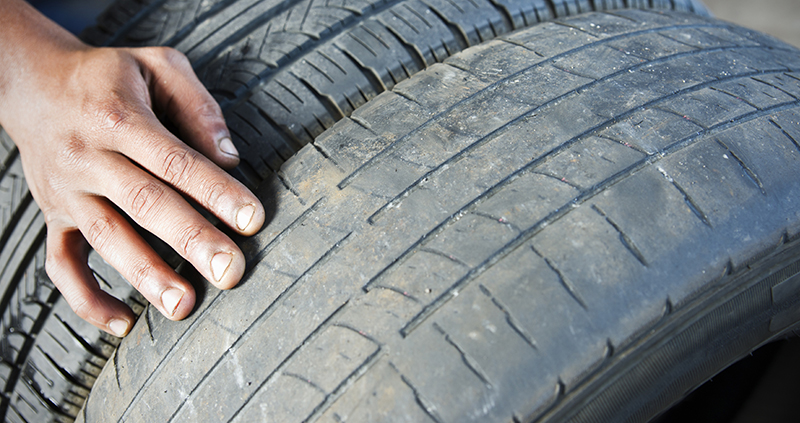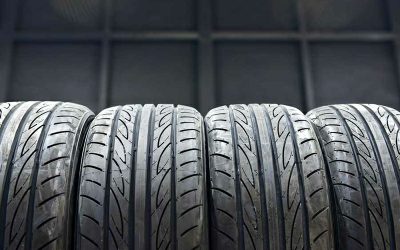You may find some tire wear patterns confusing to recognize if you have not coped with a similar situation before. Or even when you know how to read tire wear, you may need solutions for your tires’ conditions.
What are cupping or patching wear patterns? And what should you do after realizing your tires are center-wearing, for example?
What Do Common Tire Wear Patterns Signal To You?
It is a good thing that you can diagnose your car problems by reading tire wear patterns. Here are some popular patterns and what they warn you about:
Outer Wear At One-Side Edge
This kind of pattern has another name called “toe wear” – the wrong alignment leads to the wearing status in the outer edge of only one side.
Toe is the side-to-side difference in distance between the front and rear of the front tires. Toe wear indicates that your front tires are leaning unevenly, which may be caused by over-cornering with misalignment for a long time.
You just have one solution in this case: gaze at your tire alignment and make sure that your toe setting is correct.
Inner Wear At One-Side Edge
There is no accurate measurement for the outer and the inner wear. However, we can give you a tip that may help you in determining the type of indicators.
We can tell the difference between toe wear and camber wear is by running our fingers across the tire in both directions.
You can guess this is toe wear because it’s causing the rubber to push, leading to a feathered edge or resistance as you pull your hand back across it. On the other hand, camber wear is smooth in both directions.
Both tires wearing on outside edges or inner edge warn you about misalignment, but you can save your time in repairing them by determining in detail.
Center Wear
Over-inflated tires are responsible for tires wearing in center.
The tire was filled up with air to the point where only the bottom of the tire or the center of the tire hits the road. It got bald in the middle but still fresh on the sides as you put too much air in your tires.
There is some misconception that the more inflated a tire is, the better. In fact, the harm here outweighs the gain.
The friction force of the road surface and tires will be reduced when your tires are over-inflated. In case you need to brake quickly, it will be easy to make your car slide.
Outer Wear In Two-Side Edge
This condition is opposite in comparison to the above wear pattern. When the amount of air is not enough in your tire , you may feel your car moving more slowly, and your tires will wear in both outside of the edge.
In case the tire is under-inflated, there is more contact surface with the road, and more friction as a result. Besides, it leads to the engine having to work more and reduces the vehicle’s fuel economy.
Patchy Wear
This is a sign that your car has braked hard, and the tire has slipped on the road surface at a point of contact. The wheels are easily locked in vehicles without an anti-lock braking system when braking sharply, leading to a flat spot on the tire surface.
In addition, there is another possibility leading to this phenomenon. Your car might be parked in one position for too long. In that case, the heavy load of the car imposed on the tire will not cause scratches, but it will distort the tire.
This type of wear, if it is located on the steering wheel, can cause loss of balance for the vehicle and reduced safety when driving. It would be best if you changed new tires to ensure safety.
Cupping Wear
These are convex and concave shapes in the shape of waves or shells, you can observe and see with the naked eye, or you can touch the tire surface with your hand.
This wear pattern usually signals that parts of the suspension system have been damaged or worn down. It causes the tire to bounce up and down at one point more strongly than another and creates a dent in the tire after a good while.
The main cause is poor shock absorbers or any problem connecting the wheel to the vehicle.
Besides, unbalanced wheels might contribute to cup deformation on the tire but it’s a less common cause.
Conclusion
We have listed out the most common tire wear patterns as well as pointed out some reasons behind them.
Tires are one of the major parts of a car and greatly affect the ride quality and your safety. We hope our guidelines can give you a comprehensive look at your car tire indicators so that you can take timely repair measures.








